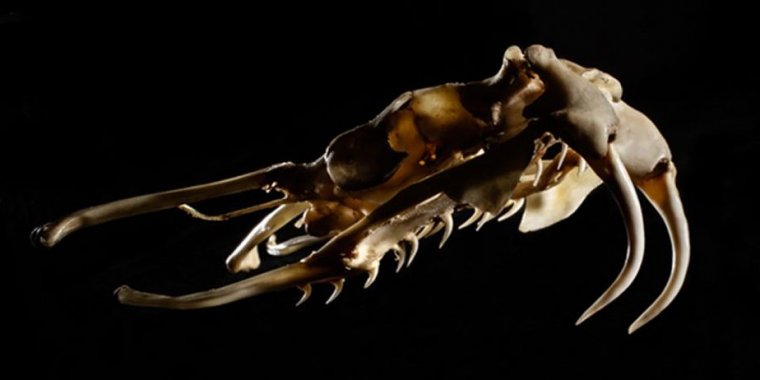| News / Science News |
What happens when one organism stabs another with its fangs, thorns, spines?
Researchers have created a model that can calculate the energetics involved when one organism stabs another with its fangs, thorns, spines or other puncturing parts. Because the model can be applied to a variety of organisms, it will help scientists study and compare many types of biological puncturing tools. It also will help engineers develop new systems to efficiently pierce materials — or resist being pierced.

A new model will help biologists calculate the energy used when one organism stabs another. Pictured: A viper skull. Photo: L. Brian Stauffer
The idea behind the research was to develop a framework for comparing biological puncture systems, according to Philip Anderson, a University of Illinois Urbana-Champaignbiologist who led the research. "An initial question was how do we measure these different systems to make them comparable."
Animals and plants deploy a variety of strategies for stabbing prey or defending themselves against other organisms, and even those that use similar strategies or tools alter those to meet their specific needs. The targets also differ.
"In vipers (snakes), for example, some bite mammals, which means they must puncture through soft tissues encased in skin, while others target reptiles, which have scales, making them stiffer and harder to pierce," said Anderson.
Still other organisms, like parasitoid wasps, may use their ovipositors to burrow through the hides of caterpillars but also can penetrate fruit or even wood.
To develop a model that could be applied to a variety of systems, the researchers determined the key factors that must be included in calculations of the energetics involved.
That includes changes in the kinetic energy as the puncturing tool is used and considers the material properties of the target tissue.
All of which involves calculations of how the initial kinetic energy drives a puncturing tool into a material and opens new surfaces in the material as the fracture propagates. It also takes into consideration the frictional resistance and elasticity of the target tissue.
The calculations were aimed at tapered puncturing tools, which are common in biological systems, the researchers said.
If scientists know the morphology or the shape of the damage created by a puncture tool, they can use this model to predict how much energy was expended during a puncture scenario.
Or predict different aspects of the material's property, such as how it will fracture, useful in engineering and biological applications. (U.S. National Science Foundation)
YOU MAY ALSO LIKE





